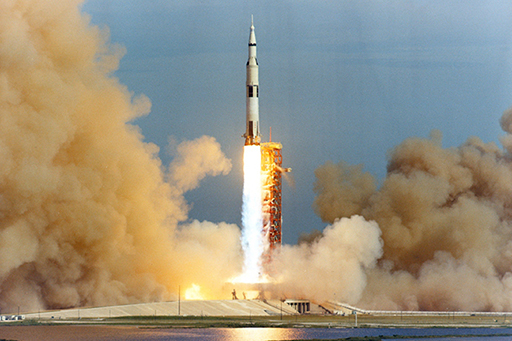3.5 Making rocket fuel
Water as we know it on Earth consists of hydrogen and oxygen atoms bonded together (H–O–H). To separate these elements requires an electric current and two electrodes, called a cathode and an anode. These electrodes have opposite charges: the cathode is negative, the anode positive. When the water is placed in a container with the electrodes and the electric current is switched on, there is an enhanced tendency for the water molecules to dissociate into hydrogen ions (H+) and hydroxide ions (OH−). (Water molecules have some tendency to dissociate even without help from us!) The hydrogen ions are then attracted to the cathode and the hydroxide ions are attracted to the anode. The hydrogen and oxygen can then be stored away in separate containers in their elemental form until they are needed.
Now you have seen that an input of energy in the form of electricity was needed to split water into hydrogen and oxygen. It should not be a huge surprise then to discover that if the two elements are brought back together, the result will be a release of energy with the production of water. In fact, the release of energy is so explosive that these elements can be used as rocket fuel. Liquid hydrogen and liquid oxygen were used to propel the second and third stages of the Saturn V rocket that sent Apollo to the Moon. The first stage of Saturn V used a special type of kerosene and liquid oxygen. Why the difference? You may have already guessed part of the answer: cost. The amount of fuel required to launch a spacecraft from the surface of an object, be it the Moon or Earth, is quite high. The bigger the object, the more fuel required to escape its surface, which is one of the reasons combustion of pure hydrogen and oxygen obtained by electrolysis of water hasn’t been used on Earth for rocket launches. Another important reason why this hasn’t been used on Earth is because of the high cost of the electricity to create the fuel. This might be less of a problem on the Moon though.
The lunar poles are subject to over 80% sunlight in certain regions. The areas with water are also in the lunar polar regions. If the sunlight can be harvested using solar panels, enough energy could be produced to use electrolysis to make rocket fuel from the water. And, as you know, the Moon has less gravity than the Earth, so less fuel is required to escape the lunar surface. If we were able to get to the Moon and set up the equipment, it might be possible to return to Earth using rocket fuel made from lunar water (assuming there is enough water available).
If you still have time now you have almost finished this week’s work, you will probably enjoy ESA’s marvellous 8-minute video Destination: Moon [Tip: hold Ctrl and click a link to open it in a new tab. (Hide tip)] that goes through the history and possible future of lunar explanation, ending with the manufacture of rocket fuel from lunar water.
But before you move onto the next section you may find it interesting to watch the following video, which is a recording of a live video presentation in which answers to some of the questions raised earlier in this course are given.
See also: NASA - SELENE data suggests no perpetual sunlight on lunar poles

